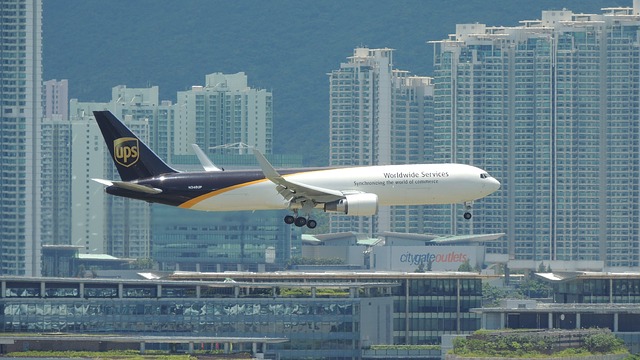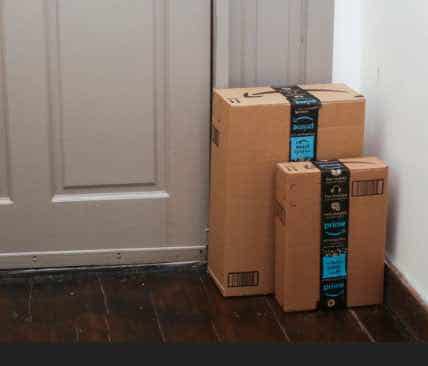Have You Thought About the Amazon Boxes on Your Porch?
Most of us have those boxes, delivered by Amazon, stacking up on our porches. Have you thought about what the carbon footprint is of those deliveries?
Amazon’s boxes are doing more than just piling up on our porches. They’re revolutionizing our long-established shipping, logistics and last-mile delivery networks.

Today, because of Amazon’s delivery requirements, on-demand shipping and e-commerce are booming. Amazon’s Prime shipping is rapidly moving toward the almost-instant one-day delivery.
Because of these changes, shipping-related carbon emissions associated with e-commerce are growing exponentially. Because of these changes, commerce and freight companies are under increasing pressure to reduce their emissions.

Today’s supply chain has become more complex. The resulting environmental repercussions of these changes are dependent on where the shipped item is coming from and going to. It also matters how the item is transported before delivery.
If your items came from another country, then carbon emissions are associated with the container ship that moved it. If your item travels by rail, some carbon emissions are associated with the diesel used to power railroad locomotives. Transporting goods by rail is dramatically more efficient than trucking. There’s also air shipments with planes reliant on fossil fuel-based jet fuel.
Generally in the United States, most of the carbon emissions from shippingcome from the heavy-duty trucks moving goods across regions, and the delivery trucks dropping off the boxes that end up at your front door.
Sometimes Packages are Moved Using Airplanes
In the run up to Hurricane Dorian we were finalizing our hurricane preparations. The initial weather service storm tracks had a strong probability for the storm to hit Florida and move through Central Florida where I live.
We had our new propane powered generator and sufficient propane to power the generator for a week. Our food and water supplies would easily keep us fed and hydrated for a week or more.
What we were unwilling to do was face the storm aftermath in Florida’s 100+ degree heat without air conditioning. By the time we decided that we needed a couple of new window air conditioners to keep us cool, there were none left on the store shelves.

Unwilling to accept defeat, I checked the availability of air conditioners on Amazon. I was pleasantly surprised to see air conditioners available, with FREE next day delivery with our Amazon Prime account. My natural assumption was that the AC’s were sitting in a local Amazon warehouse here in Central Florida and bought two 5,000 btu window air conditioners.
Imagine my surprise when I checked the tracking of my air conditioners and discovered that they were actually being shipped overnight air by UPS from a warehouse near Philadelphia, PA. That’s about 1,000 miles from my house.
I was even more surprised when they were delivered and on my front porch, less than 24 hours after I placed my order. The carbon footprint from my purchase was much higher than I had originally thought it would be, however, Amazon fulfilled my order and kept their promise about over night delivery.
Can You Calculate Your Amazon Carbon Footprint
Our total carbon footprint can’t in most cases be calculated because of insufficient information. The data concerning production and transportation of our Amazon puchases is complex, making it impossible to calculate our puchases carbon footprint.
Many suggest that it’s best to define carbon footprint broadly. This is necessary because most of the average households carbon footprint emissions associated with your Amazon purchases come from indirect sources.
An example of these indirect sources would be the fuel burned to produce and deliver goods from distant manufacturers to the final consumer. These indirect sources are separate from the emissions which come from direct energy consumption by consumer’s in their homes and daily transportation.
We may not be able to calculate the carbon footprint of our Amazon purchases. However, it just makes sense that the further your package travels, the larger the carbon footprint. It continues to matter if you try to ahere to green practices in your personal and business activities.
Calculate Your Carbon Footprint
If you would like to calculate your Carbon Footprint, follow the link to the free carbon footprint calculator of the United States Environmental Protection Agency.








